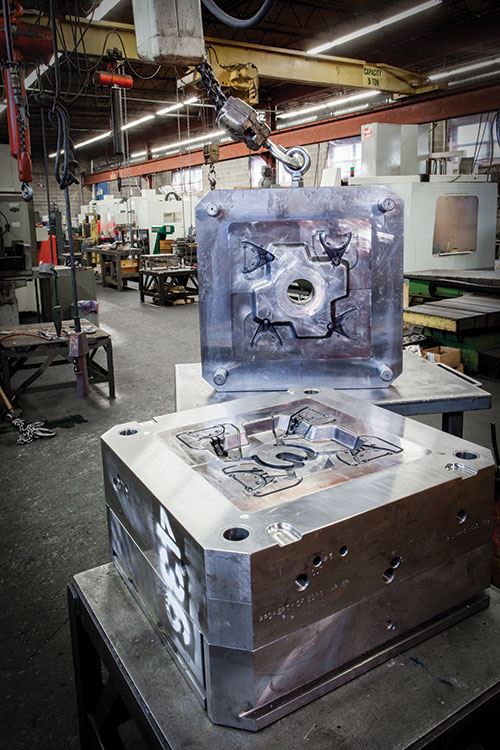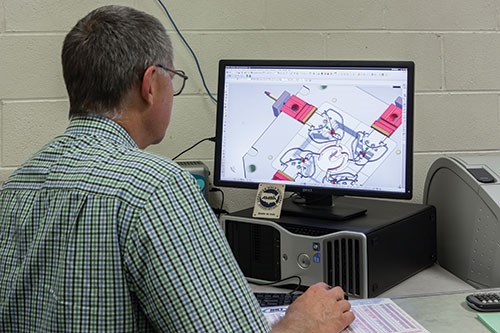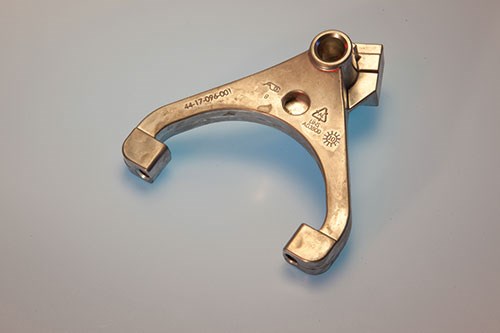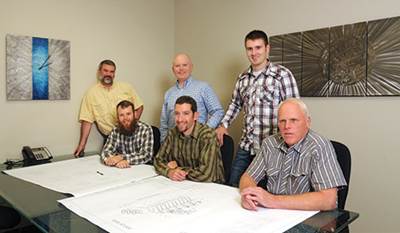Better Molds in Less Time with High-Technology Machinery
One of the most important contributors to its bottom line is Do-Rite’s latest addition, a new Creative Evolution FMC-1060 machine.
How can a small, family-owned moldmaker compete in today’s competitive business climate? Strategic investment in high-technology machinery is the key for South Chicago Heights manufacturer Do-Rite Die & Engineering.
Do-Rite Die & Engineering specializes in the design and manufacture of die-casting molds and dies whose end products are for a wide range of industries including automotive, medical, lighting, furniture, housewares, appliances, hardware and power tools, agriculture, and industrial equipment. In addition to traditional high- and low-pressure die casts, Do-Rite also manufactures tilt-pour permanent molds and multi-slide tools, also known in the industry as Techmire or miniature die-casting molds.
Do-Rite has a reputation for its in-house engineering capabilities, which enable the design to get through mold manufacturing to the end-product faster. Clients report Do-Rite’s engineering has helped them reduce cycle times while improving part quality.
Continuous improvement has been this 60-year-old shop’s key to success, especially through all the industry changes in the past five years—never mind all the changes since the company’s inception in 1953. “A newly competitive global business climate has necessitated big changes to increase productivity while reducing costs, Do-Rite President Alan Szymanski says. “Today’s clients enjoy faster delivery with a new, higher standard of quality from us. The result is a better value than ever before.
“As moldmakers, we’re constantly improving our skills. It is one of the attractive aspects of a career in moldmaking—we are learning every day. I like to tell people that we’ve been doing the same thing differently for 60 years. We’ve always made die-casting dies, but the techniques keep improving.”
“I’m really proud of our team of moldmakers,” continues Szymanski. “Their pursuit of perfection is crucial to the reputation that Do-Rite Die has earned over the years. They have adapted to new equipment and techniques to build our tools both better and faster.”
Technology Breakdown
Investing heavily in new machine technology has given the Do-Rite team the right tools to compete. Multiple high-speed CNC machines with sophisticated accessory tooling are at the heart of the formula. In the past five years, Do-Rite not only bought three new high-speed machining centers, but also upgraded the control on its graphite electrode mill. The result is faster, more accurate machining; less benching; and fewer setups.
“In 2008, we bought our first true high-speed machining center, a Mikron HSM-800,” Szymanski says. “This gave us a great taste of high-speed technology and what it could do, but with only one high-speed machine, we often found ourselves breaking setups to move jobs in and out of that machine as priorities changed.”
In spite of a slow period in 2010, Do-Rite upgraded its electrode milling capability by updating the control on its BostoMatic 32GS electrode mill. “Updating with the Creative Evolution CNC control more than doubled our productivity” Szymanski says. “The machine runs faster and is more accurate today than when it was delivered new because of the new control’s look-ahead performance. Today, our electrodes are finished faster and need little or no handwork. Less handwork means we get more accurate electrodes, more consistent burns in the EDM, and ultimately, more accurate and consistent molds.”
One of the most important considerations in the decision to update or to retrofit with the Creative Evolution CNC was the price. “For about one-fourth the cost of a new electrode mill, we were able to update our existing machine to a whole new level of performance. That also saved us other costs like shipping, rigging and retooling,” Szymanski says.
The impressive results from the CNC retrofit made it easy to consider adding another high-performance machine. In 2011, Do-Rite added a new Creative Evolution CNC model FMC-1570. This is a larger-capacity high-speed machine than Do-Rite’s Mikron HSM-800. With axis travels of 58 × 27.5 × 25 inches, the machine’s work envelope is about twice the size—quite large as high-speed machines go. The 15,000-rpm spindle has the speed to handle one-eighth-inch and smaller cutters efficiently for contouring, and lots of power at the low end for roughing with big insert cutters. The Big Plus BBT-40 spindle design provides extra rigidity for heavy cuts.
This niche machine, designed specifically for moldmakers, features high speed combined with high-performance metal removal. George Nicoloff, president of machine builder Geonics Inc., says the key is the Creative Evolution CNC controller’s look-ahead features. “Look-ahead is a feature that helps the machine maintain optimal feed rates through complex contours,” he says. “This means that even though the machine program may command the same feed rate through a complex contour, the machine slows as much as necessary to maintain accuracy, yet mills at the optimal programmed feed rate wherever possible. The Creative Evolution CNC finishes parts faster while maintaining higher accuracy. Additional benefits are better surface finish and longer cutter life.”
Szymanski supports Nicoloff’s claims. “When we were first considering the retrofit, we talked with several other companies who use the Creative Evolution equipment. The consensus was that the Creative Evolution CNC performed at a level competitive with more well-known brands that sell at higher prices. This value has proven to be a distinct competitive advantage. The end result is better parts for a better looking and more accurate product, all in less time. That’s a win-win for us and our customers.”
One of the most important contributors to its bottom line is Do-Rite’s latest addition, a new Creative Evolution FMC-1060 machine. At roughly 40 × 24-inch table travels and with a heavy-duty, 15,000-rpm spindle, this machine covers the majority of Do-Rite’s machining needs, and the Creative Evolution CNC’s high-speed performance means that if a job fits, the company can generally do all milling operations without moving a job to another machine.
“That’s the point,” says Ed Szymanski, Do-Rite’s vice president of engineering. “The high-speed performance of the Creative Evolution CNCs, with their ability to take heavy cuts, means we have fewer setups.
“Automated laser tool probing and part probing has made setups all the easier, too. Tool-length offsets and cutter geometry are set and verified automatically. Heavy steel blocks can simply be set straight on the table, and the center location and top positions are automatically located by probing. The new machines make setup faster and more accurate. What’s more, the automation eliminates one more opportunity for error, our setups.”
Summary
The past 10 years or more have shown plenty of change in the mold industry, and no end is in sight. “Continuous investment in technology is never-ending,” Alan Szymanski says. “We have already planned our next purchase for late 2013 and look forward to adding more capabilities to help us continue to serve our customers with better molds in less time.”
For More Information:
Do-Rite Die & Engineering
(708) 754-4355
do-ritedie.com
Related Content
Revisiting Some Hot Runner Fundamentals
What exactly does a hot runner do? If you’ve been in the injection molding industry for any length of time, you might think the answer is obvious, but it is not.
Read MoreLaser Welding Versus Micro Welding
The latest battle in finely detailed restoration/repair of mold materials.
Read MoreMoldmakers Deserve a Total Production Solution
Stability, spindle speed and software are essential consideration for your moldmaking machine tool.
Read MoreFundamentals of Designing the Optimal Cooling System
The right mold components can help improve mold cooling and thereby produce higher-quality parts.
Read MoreRead Next
The Design Phactory: Churning Out Creative, Complex Mold Designs
“Mold builders make the best designers.”
Read MoreHow to Use Continuing Education to Remain Competitive in Moldmaking
Continued training helps moldmakers make tooling decisions and properly use the latest cutting tool to efficiently machine high-quality molds.
Read MoreReasons to Use Fiber Lasers for Mold Cleaning
Fiber lasers offer a simplicity, speed, control and portability, minimizing mold cleaning risks.
Read More





























